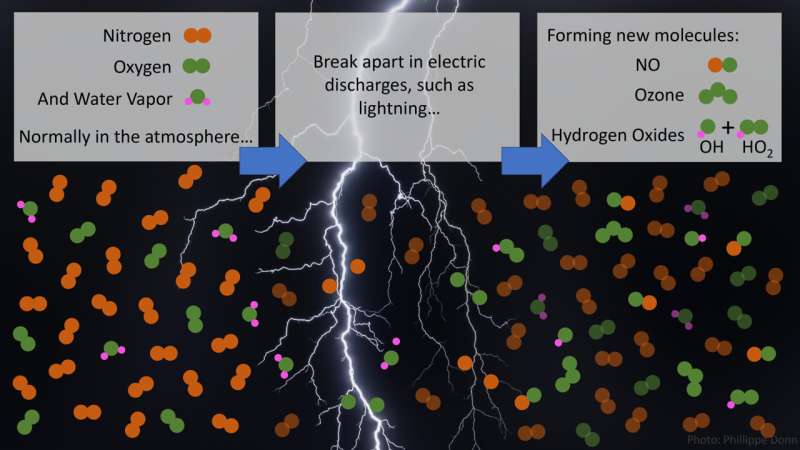Phy.org April 29, 2021
Lightning increases the atmosphere’s ability to cleanse itself by producing nitric oxide (NO), leading to atmospheric chemistry that forms ozone (O3) and the atmosphere’s primary oxidant, the hydroxyl radical (OH). A team of researchers (Pennsylvania State University, Texas Tech University, NOAA, University of Oklahoma, University of Maryland, University of Alaska, University of Colorado) analyzed data from their 2012 airborne study of deep convection and chemistry which showed that lightning also directly generates the oxidants OH and the hydroperoxyl radical (HO2). Extreme amounts of OH and HO2 were discovered and linked to visible flashes occurring in front of the aircraft and to subvisible discharges in electrified anvil regions. The enhanced OH and HO2 is orders of magnitude more than any previous atmospheric observation. Lightning-generated OH in all storms happening at the same time globally can be responsible for a highly uncertain but substantial 2-16% of global atmospheric OH oxidation. According to the researchers these results are highly uncertain. The structure of high plains storms is different than those in the tropics. More aircraft measurements are required to reduce this uncertainty…read more. TECHNICAL ARTICLE

Nitrogen, oxygen, and water vapor molecules are broken apart by lightning and associated weaker electrical discharges, generating the reactive gases NO, O3, HO2, and the atmosphere’s cleanser, OH. Credit: Jena Jenkins, Penn State